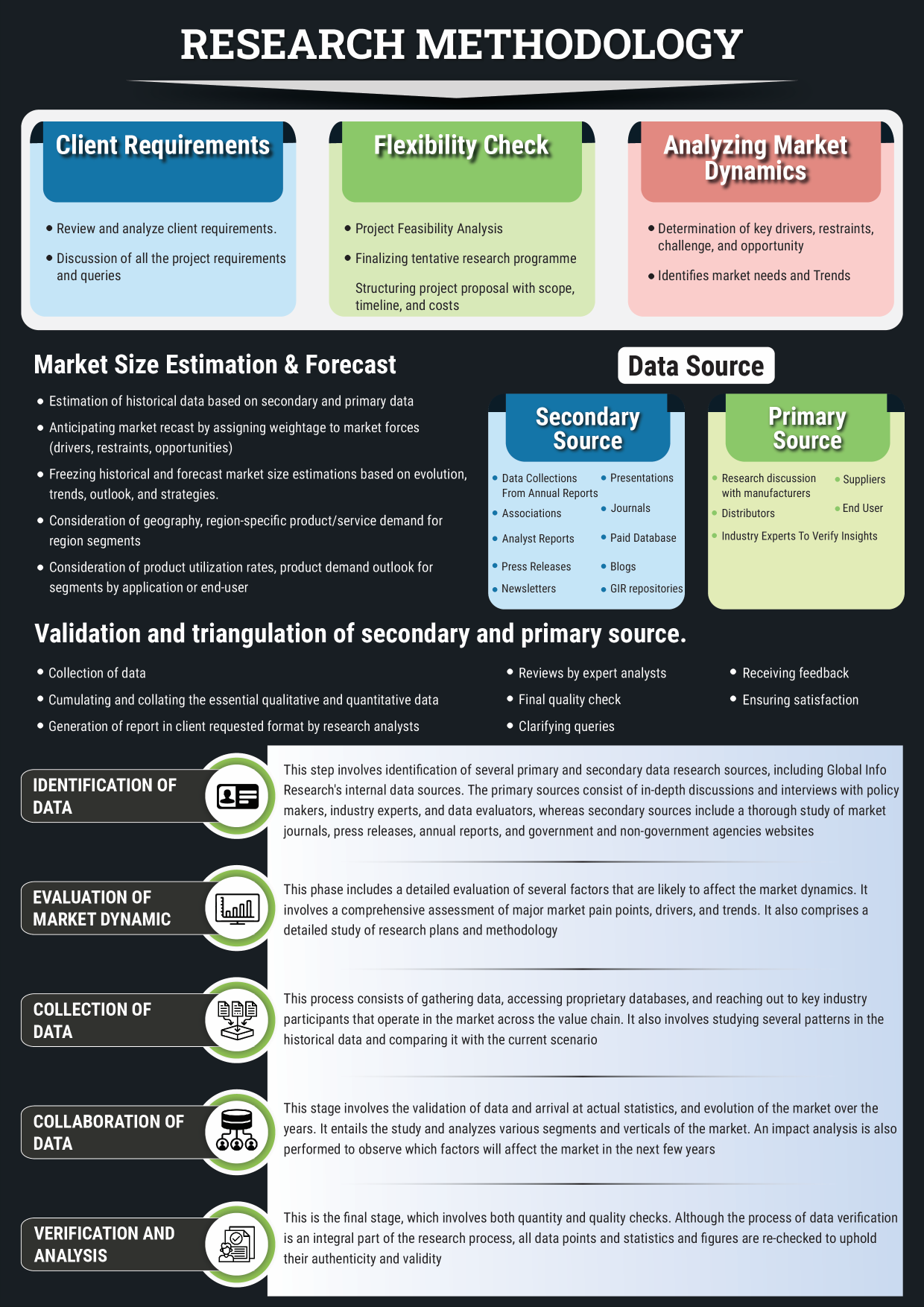Vascular Closure Devices Market 2025: Comprehensive Analysis, Growth Drivers, and Regional Insights
The vascular closure devices market is undergoing rapid expansion as healthcare systems worldwide prioritize minimally invasive procedures and enhanced patient outcomes. These devices, essential for sealing arterial punctures following catheter-based interventions, play a critical role in reducing complications, shortening recovery times, and improving overall procedural efficiency. As the market approaches 2025, a combination of technological innovation, shifting patient demographics, and evolving regional dynamics is shaping the future landscape. This article provides an in-depth analysis of market drivers, innovations, regional trends, and strategic considerations to help stakeholders make informed decisions.
Vascular closure devices (VCDs) are medical tools designed to seal puncture sites in arteries after diagnostic or interventional procedures such as angiography and angioplasty. Traditional manual compression methods to stop bleeding are time-consuming and often uncomfortable for patients, requiring extended bed rest and increasing the risk of bleeding complications.
In contrast, vascular closure devices provide a faster and safer alternative, enabling quicker hemostasis and allowing patients to mobilize sooner. This not only improves patient comfort but also reduces hospital stays, lowers healthcare costs, and enhances clinical workflow efficiency. The growing preference for minimally invasive cardiovascular interventions continues to drive the demand for effective vascular closure solutions globally.
Key Market Drivers Propelling Growth Through 2025
The growth of the vascular closure devices market is influenced by several critical factors:
- Rising Prevalence of Cardiovascular Diseases: Globally, cardiovascular conditions remain the leading cause of morbidity and mortality. The increasing incidence of heart disease, stroke, and related vascular disorders leads to a higher volume of catheter-based procedures that require effective vascular access management.
- Increasing Number of Minimally Invasive Procedures: Minimally invasive techniques like percutaneous coronary interventions (PCI) are preferred over open surgeries due to reduced risk and faster recovery. This trend significantly boosts the demand for vascular closure devices.
- Aging Population: As populations age worldwide, the need for cardiovascular interventions rises. Elderly patients particularly benefit from devices that minimize procedural risks and facilitate faster healing.
- Focus on Patient Safety and Comfort: Healthcare providers emphasize reducing complications such as bleeding and hematomas, which vascular closure devices help mitigate. Improved patient experience and quicker ambulation after procedures also support their adoption.
- Healthcare Cost Containment: By reducing hospital stay durations and associated complications, vascular closure devices contribute to cost savings in healthcare facilities—a crucial factor in today’s value-based care environment.
Innovations Driving Market Evolution
Innovation remains at the core of the vascular closure devices market, focusing on improving safety, efficacy, and user experience. Key technological advancements include:
- Biodegradable Materials: Modern devices increasingly use materials that naturally degrade after sealing the puncture, minimizing the risk of infection and eliminating the need for device removal.
- Simplified Deployment Systems: Newer designs focus on ease of use, reducing procedural time and enabling a wider range of healthcare professionals to perform closure effectively.
- Versatility for Various Procedures: Devices compatible with multiple catheter sizes and different vascular anatomies expand their clinical utility beyond coronary interventions to peripheral and neurovascular applications.
- Digital Integration and Smart Monitoring: Emerging smart vascular closure devices equipped with sensors allow clinicians to monitor hemostasis and patient recovery in real time, enabling timely intervention and personalized care.
Regional Market Dynamics and Opportunities
Understanding regional trends is critical for businesses aiming to capture market share:
- North America: The largest market globally, North America benefits from advanced healthcare infrastructure, high procedural volumes, and strong reimbursement frameworks. The United States leads with rapid adoption driven by ongoing cardiovascular research and technological innovation.
- Europe: Europe holds a significant share, supported by comprehensive healthcare systems, regulatory encouragement of minimally invasive technologies, and growing public awareness of cardiovascular health. Germany, France, and the UK are key contributors to market demand.
- Asia-Pacific: This region is expected to witness the fastest growth due to increasing healthcare access, rising prevalence of cardiovascular diseases, and improving healthcare infrastructure. China, India, Japan, and Australia are the primary growth engines, propelled by government initiatives and expanding middle-class populations seeking quality healthcare.
- Latin America and Middle East & Africa: These emerging markets offer untapped potential. Improving healthcare infrastructure and increasing cardiovascular disease awareness are encouraging adoption, though pricing sensitivity and regulatory challenges remain considerations.
Strategic Considerations for Market Participants
To thrive in the competitive vascular closure devices market, companies should focus on the following strategies:
- Collaborative Partnerships: Working closely with hospitals, research institutions, and clinicians aids in validating device efficacy and drives clinical adoption through evidence-based data.
- Regulatory Compliance: Navigating diverse and evolving regulatory environments is crucial. Early engagement with regulatory bodies ensures smoother approvals and timely market access.
- Cost-Effective Solutions: Tailoring pricing strategies to accommodate both developed and emerging markets can enhance penetration, especially in regions with budget constraints.
- Focus on Innovation and Digital Integration: Incorporating smart technologies and enhancing device usability will differentiate products and meet growing demands for personalized, data-driven healthcare.
- Marketing and Education: Educating healthcare providers on the benefits and usage of vascular closure devices can improve acceptance and routine implementation.
Conclusion
The vascular closure devices market is set for robust growth through 2025, fueled by increasing cardiovascular disease prevalence, expanding minimally invasive procedures, and continuous technological advancements. These devices not only improve patient safety and comfort but also help healthcare systems optimize operational efficiency.
Market players that invest strategically in innovation, understand regional market dynamics, and foster strong clinical partnerships will be well-positioned to capture emerging opportunities. As cardiovascular care increasingly favors less invasive interventions, vascular closure devices will remain indispensable tools in advancing patient outcomes and healthcare quality worldwide.
NOTE:
Quants and Trends is proud to offer an extensive portfolio of meticulously researched healthcare market reports, numbering in the thousands. We also provide tailored customization services to ensure our insights align precisely with your strategic objectives and informational needs. For personalized assistance or to discuss your specific requirements, we invite you to get in touch with our team. We also encourage you to request a complimentary sample PDF report. Please visit our Sample Request Page to receive yours today.
Key Market Players
Abbott Laboratories
Terumo Corporation
Cordis
Teleflex Incorporated
Morrris Innovative
Segmentation By Type
5F
6F
7F
8F
Others
Segmentation By Application
Angiography Surgery
Interventional Procedures
Segmentation By Region
North America (United States, Canada and Mexico)
Europe (Germany, France, United Kingdom, Russia, Italy, and Rest of Europe)
Asia-Pacific (China, Japan, Korea, India, Southeast Asia, and Australia)
South America (Brazil, Argentina, Colombia, and Rest of South America)
Middle East & Africa (Saudi Arabia, UAE, Egypt, South Africa, and Rest of Middle East & Africa)
Market SWOT Analysis
What are the strengths of the Vascular Closure Devices Market in 2025?
The vascular closure devices market is poised for growth due to increasing demand for minimally invasive surgeries and faster recovery times. Technological advancements in device design and functionality also enhance market potential. Additionally, the growing elderly population, who are more prone to vascular diseases, significantly contributes to the demand.
What are the weaknesses of the Vascular Closure Devices Market in 2025?
The high cost of advanced vascular closure devices may limit their adoption in low-income regions. Furthermore, there are concerns about device complications or adverse effects, which could impact patient outcomes. The complexity of some devices also requires highly skilled professionals, which could limit widespread use.
What are the opportunities in the Vascular Closure Devices Market in 2025?
Opportunities include expanding into emerging markets with a rising healthcare infrastructure, particularly in Asia and Latin America. Additionally, the increasing focus on personalized medicine and patient-specific treatment plans provides avenues for innovation in vascular closure devices. Partnerships with hospitals and healthcare organizations could also boost growth.
What are the threats to the Vascular Closure Devices Market in 2025?
Regulatory challenges and stringent approval processes could delay the introduction of new products. Competitor advancements, such as alternative technologies or new approaches to vascular closure, might also pose a threat to market share. Additionally, economic downturns or healthcare budget cuts could limit the growth of the market in certain regions.
Market PESTEL Analysis
What political factors influence the Vascular Closure Devices Market in 2025?
Government regulations and healthcare policies play a significant role in shaping the market. Political stability and healthcare reforms can either encourage or restrict the adoption of advanced vascular closure devices, especially in countries with stringent medical device approval processes.
How do economic factors impact the Vascular Closure Devices Market in 2025?
Economic factors, including healthcare spending and budget allocations, directly affect the market's growth. In regions with strong economies, demand for advanced healthcare technologies increases. However, economic downturns or recessions may limit investments in high-cost devices and impact the market negatively.
What social factors are relevant to the Vascular Closure Devices Market in 2025?
An aging global population and a rising prevalence of cardiovascular diseases create a strong demand for vascular closure devices. Additionally, the shift toward minimally invasive procedures is driving acceptance and preference for these devices, as patients seek quicker recovery times and lower risk.
What technological factors affect the Vascular Closure Devices Market in 2025?
Continuous advancements in medical technology, such as the development of smaller, more efficient vascular closure devices, are enhancing the market. Innovations in materials, device design, and automation also improve device performance, safety, and ease of use, driving adoption across healthcare institutions.
How do environmental factors influence the Vascular Closure Devices Market in 2025?
Sustainability concerns are influencing the healthcare sector, including the use of eco-friendly materials in the production of vascular closure devices. Healthcare facilities are also becoming more conscious of waste reduction, which could drive demand for devices that are more efficient and require less disposable material.
What legal factors are important for the Vascular Closure Devices Market in 2025?
Compliance with international regulations, such as the FDA in the U.S. and CE marking in Europe, is critical for market growth. Manufacturers must also navigate intellectual property laws and patents, ensuring that they protect innovations while avoiding legal disputes.
Market SIPOC Analysis
Who are the suppliers in the Vascular Closure Devices Market in 2025?
Suppliers include manufacturers of raw materials such as polymers, metals, and biocompatible materials, as well as technology developers for sensor and automation systems. Suppliers also include companies that provide specialized components and subassemblies needed to create the final vascular closure devices.
What inputs are required for the Vascular Closure Devices Market in 2025?
Inputs include high-quality raw materials, cutting-edge technology for device design, research and development for product innovation, and skilled labor for manufacturing. Regulatory approvals and certifications from agencies like the FDA or EMA are also critical inputs for bringing products to market.
What processes are involved in the Vascular Closure Devices Market in 2025?
Key processes include research and development of new device designs, testing for safety and efficacy, manufacturing of devices, and obtaining necessary regulatory approvals. Distribution channels, marketing strategies, and training healthcare professionals on proper usage are also part of the market's process.
Who are the customers in the Vascular Closure Devices Market in 2025?
Customers include hospitals, surgical centers, and clinics performing minimally invasive vascular surgeries. Additionally, healthcare providers, including cardiologists and vascular surgeons, are key customers, as they are responsible for recommending and using these devices in patient procedures.
What are the outputs in the Vascular Closure Devices Market in 2025?
The outputs are the vascular closure devices themselves, which are designed to close arterial punctures quickly and safely after catheterization procedures. These outputs also include training programs, customer support, and post-market surveillance services to ensure product effectiveness and patient safety.
Market Porter's Five Forces
What is the threat of new entrants in the Vascular Closure Devices Market in 2025?
The threat of new entrants is moderate due to high barriers to entry such as significant capital investment, complex regulatory approvals, and the need for specialized technological expertise. Established companies with strong brand recognition and distribution networks dominate the market, making it challenging for new players to compete effectively.
What is the bargaining power of suppliers in the Vascular Closure Devices Market in 2025?
The bargaining power of suppliers is relatively moderate. While raw materials and specialized components are critical for manufacturing, the market has a range of suppliers offering similar materials. However, companies relying on cutting-edge technologies and high-quality biocompatible materials may face higher supplier power.
What is the bargaining power of buyers in the Vascular Closure Devices Market in 2025?
The bargaining power of buyers is moderate to high. Hospitals, surgical centers, and healthcare providers often purchase in bulk and have multiple options for vascular closure devices, which increases their negotiating power. However, the need for specialized, high-quality devices with proven effectiveness limits their options, somewhat reducing bargaining power.
What is the threat of substitute products in the Vascular Closure Devices Market in 2025?
The threat of substitutes is low. While other methods such as manual compression or surgical sutures can be used, vascular closure devices offer significant advantages, such as faster recovery, reduced complications, and ease of use. This makes substitutes less appealing to healthcare providers and patients.
What is the intensity of competitive rivalry in the Vascular Closure Devices Market in 2025?
The intensity of competitive rivalry is high. The market is driven by a few dominant players who innovate consistently to improve product offerings. New technologies, product differentiation, and competitive pricing contribute to a highly competitive environment, making it difficult for any one player to maintain a dominant position for long.
Market Upstream Analysis
What are the key raw materials involved in the production of vascular closure devices in 2025?
The key raw materials include biocompatible polymers, metals like stainless steel, and materials used in creating devices for tissue sealing, such as sutures and hemostatic agents. Additionally, advanced materials like nickel-titanium alloys may be used for certain components requiring flexibility and strength.
What is the role of technology suppliers in the Vascular Closure Devices Market in 2025?
Technology suppliers play a crucial role by providing the necessary components for device automation, sensors, and diagnostic tools integrated into vascular closure devices. They also supply the software for device monitoring, ensuring precise functionality during medical procedures, which is essential for patient safety and device performance.
How does regulatory approval impact upstream activities in the Vascular Closure Devices Market?
Regulatory approval is a critical step in upstream activities, as manufacturers must comply with strict guidelines set by authorities like the FDA and EMA. The process can be time-consuming and costly, influencing decisions related to the sourcing of materials, production timelines, and overall R&D investments for new device innovations.
How does supplier competition affect the Vascular Closure Devices Market upstream?
Supplier competition is moderately high in the vascular closure devices market. Manufacturers often rely on specialized suppliers for components like polymers or advanced metals. The competition between these suppliers can drive improvements in quality, cost-efficiency, and delivery times, which impacts the overall production process and device pricing.
What are the challenges manufacturers face in upstream activities in 2025?
Manufacturers face challenges like fluctuating raw material prices, supply chain disruptions, and meeting regulatory standards. Additionally, the need for constant innovation in device design to stay competitive requires ongoing research and development, which can strain resources. Keeping up with evolving technologies and maintaining a high level of quality assurance are also significant challenges.
Market Midstream Analysis
What are the key processes involved in the midstream activities of the Vascular Closure Devices Market in 2025?
Midstream activities in this market primarily involve the assembly, testing, and packaging of vascular closure devices. This includes the integration of various components, such as hemostatic agents and delivery systems, ensuring they meet regulatory standards and are ready for distribution. Quality control and safety testing are critical stages in this process.
How does distribution impact midstream activities in the Vascular Closure Devices Market?
Distribution plays a significant role in midstream activities by ensuring that the devices reach hospitals, surgical centers, and healthcare providers efficiently. This involves logistics management, coordination with healthcare facilities, and adherence to medical device distribution regulations. Timely and secure delivery is essential to maintain product quality and ensure availability.
What is the role of partnerships in midstream activities in the Vascular Closure Devices Market?
Partnerships with distributors, hospitals, and healthcare providers help streamline the midstream process. Collaboration with distribution networks and medical professionals ensures that vascular closure devices are marketed effectively, reach the intended healthcare providers, and are utilized properly in clinical settings, enhancing product adoption.
How do regulatory compliance and certifications affect midstream activities?
Regulatory compliance is a key aspect of midstream activities, as all products must meet stringent requirements from agencies like the FDA and EMA. Manufacturers must ensure that devices are properly labeled, packaged, and meet all necessary health and safety standards before they can be distributed to healthcare providers.
What challenges do manufacturers face in the midstream phase of the Vascular Closure Devices Market?
Manufacturers face challenges in maintaining the efficiency of production and ensuring consistent quality control across batches. There are also logistics challenges related to distribution and managing inventory to meet fluctuating demand. Additionally, keeping up with changing regulatory standards and ensuring all products remain compliant can be complex and time-consuming.
Market Downstream Analysis
What are the key downstream activities in the Vascular Closure Devices Market in 2025?
Key downstream activities include product distribution to healthcare providers, training medical staff on the proper use of devices, and post-sale support. Additionally, the monitoring of product performance in clinical settings and gathering feedback from users play an important role in maintaining the quality and reliability of the devices.
How do healthcare providers impact downstream activities in the Vascular Closure Devices Market?
Healthcare providers, including hospitals, clinics, and surgical centers, are crucial in driving the demand for vascular closure devices. Their adoption and recommendation of these devices influence market growth. Proper training and understanding of device functionality are vital to ensure optimal patient outcomes and to promote device usage across healthcare settings.
What role does customer support play in downstream activities?
Customer support is vital in the downstream phase as it ensures that any issues related to device performance are addressed promptly. Offering continuous support, including troubleshooting, device maintenance, and addressing any complications, helps build trust and brand loyalty among healthcare providers and patients.
How do feedback and data from end-users affect downstream activities?
Feedback from end-users, such as surgeons and nurses, helps manufacturers improve product design and functionality. Post-market surveillance and data collection on device outcomes allow manufacturers to refine their products, respond to potential issues, and comply with regulatory requirements for safety and efficacy.
What are the challenges in the downstream phase of the Vascular Closure Devices Market?
Challenges in the downstream phase include ensuring the timely distribution of devices, meeting the specific needs of diverse healthcare settings, and maintaining high standards of post-sale service. Additionally, market saturation in certain regions and varying levels of awareness and training among healthcare professionals can also impact device adoption and usage.
Chapter 1, to describe Vascular Closure Devices product scope, market overview, market estimation caveats and base year.
Chapter 2, to profile the top manufacturers of Vascular Closure Devices, with price, sales, revenue and global market share of Vascular Closure Devices from 2018 to 2023.
Chapter 3, the Vascular Closure Devices competitive situation, sales quantity, revenue and global market share of top manufacturers are analyzed emphatically by landscape contrast.
Chapter 4, the Vascular Closure Devices breakdown data are shown at the regional level, to show the sales quantity, consumption value and growth by regions, from 2018 to 2029.
Chapter 5 and 6, to segment the sales by Type and application, with sales market share and growth rate by type, application, from 2018 to 2029.
Chapter 7, 8, 9, 10 and 11, to break the sales data at the country level, with sales quantity, consumption value and market share for key countries in the world, from 2017 to 2022.and Vascular Closure Devices market forecast, by regions, type and application, with sales and revenue, from 2024 to 2029.
Chapter 12, market dynamics, drivers, restraints, trends, Porters Five Forces analysis, and Influence of COVID-19 and Russia-Ukraine War.
Chapter 13, the key raw materials and key suppliers, and industry chain of Vascular Closure Devices.
Chapter 14 and 15, to describe Vascular Closure Devices sales channel, distributors, customers, research findings and conclusion.
1 Market Overview
1.1 Product Overview and Scope of Vascular Closure Devices
1.2 Market Estimation Caveats and Base Year
1.3 Market Analysis by Type
1.3.1 Overview: Global Vascular Closure Devices Consumption Value by Type: 2018 Versus 2022 Versus 2029
1.3.2 5F
1.3.3 6F
1.3.4 7F
1.3.5 8F
1.3.6 Others
1.4 Market Analysis by Application
1.4.1 Overview: Global Vascular Closure Devices Consumption Value by Application: 2018 Versus 2022 Versus 2029
1.4.2 Angiography Surgery
1.4.3 Interventional Procedures
1.5 Global Vascular Closure Devices Market Size & Forecast
1.5.1 Global Vascular Closure Devices Consumption Value (2018 & 2022 & 2029)
1.5.2 Global Vascular Closure Devices Sales Quantity (2018-2029)
1.5.3 Global Vascular Closure Devices Average Price (2018-2029)
2 Manufacturers Profiles
2.1 Abbott Laboratories
2.1.1 Abbott Laboratories Details
2.1.2 Abbott Laboratories Major Business
2.1.3 Abbott Laboratories Vascular Closure Devices Product and Services
2.1.4 Abbott Laboratories Vascular Closure Devices Sales Quantity, Average Price, Revenue, Gross Margin and Market Share (2018-2023)
2.1.5 Abbott Laboratories Recent Developments/Updates
2.2 Terumo Corporation
2.2.1 Terumo Corporation Details
2.2.2 Terumo Corporation Major Business
2.2.3 Terumo Corporation Vascular Closure Devices Product and Services
2.2.4 Terumo Corporation Vascular Closure Devices Sales Quantity, Average Price, Revenue, Gross Margin and Market Share (2018-2023)
2.2.5 Terumo Corporation Recent Developments/Updates
2.3 Cordis
2.3.1 Cordis Details
2.3.2 Cordis Major Business
2.3.3 Cordis Vascular Closure Devices Product and Services
2.3.4 Cordis Vascular Closure Devices Sales Quantity, Average Price, Revenue, Gross Margin and Market Share (2018-2023)
2.3.5 Cordis Recent Developments/Updates
2.4 Teleflex Incorporated
2.4.1 Teleflex Incorporated Details
2.4.2 Teleflex Incorporated Major Business
2.4.3 Teleflex Incorporated Vascular Closure Devices Product and Services
2.4.4 Teleflex Incorporated Vascular Closure Devices Sales Quantity, Average Price, Revenue, Gross Margin and Market Share (2018-2023)
2.4.5 Teleflex Incorporated Recent Developments/Updates
2.5 Morrris Innovative
2.5.1 Morrris Innovative Details
2.5.2 Morrris Innovative Major Business
2.5.3 Morrris Innovative Vascular Closure Devices Product and Services
2.5.4 Morrris Innovative Vascular Closure Devices Sales Quantity, Average Price, Revenue, Gross Margin and Market Share (2018-2023)
2.5.5 Morrris Innovative Recent Developments/Updates
3 Competitive Environment: Vascular Closure Devices by Manufacturer
3.1 Global Vascular Closure Devices Sales Quantity by Manufacturer (2018-2023)
3.2 Global Vascular Closure Devices Revenue by Manufacturer (2018-2023)
3.3 Global Vascular Closure Devices Average Price by Manufacturer (2018-2023)
3.4 Market Share Analysis (2022)
3.4.1 Producer Shipments of Vascular Closure Devices by Manufacturer Revenue ($MM) and Market Share (%): 2022
3.4.2 Top 3 Vascular Closure Devices Manufacturer Market Share in 2022
3.4.2 Top 6 Vascular Closure Devices Manufacturer Market Share in 2022
3.5 Vascular Closure Devices Market: Overall Company Footprint Analysis
3.5.1 Vascular Closure Devices Market: Region Footprint
3.5.2 Vascular Closure Devices Market: Company Product Type Footprint
3.5.3 Vascular Closure Devices Market: Company Product Application Footprint
3.6 New Market Entrants and Barriers to Market Entry
3.7 Mergers, Acquisition, Agreements, and Collaborations
4 Consumption Analysis by Region
4.1 Global Vascular Closure Devices Market Size by Region
4.1.1 Global Vascular Closure Devices Sales Quantity by Region (2018-2029)
4.1.2 Global Vascular Closure Devices Consumption Value by Region (2018-2029)
4.1.3 Global Vascular Closure Devices Average Price by Region (2018-2029)
4.2 North America Vascular Closure Devices Consumption Value (2018-2029)
4.3 Europe Vascular Closure Devices Consumption Value (2018-2029)
4.4 Asia-Pacific Vascular Closure Devices Consumption Value (2018-2029)
4.5 South America Vascular Closure Devices Consumption Value (2018-2029)
4.6 Middle East and Africa Vascular Closure Devices Consumption Value (2018-2029)
5 Market Segment by Type
5.1 Global Vascular Closure Devices Sales Quantity by Type (2018-2029)
5.2 Global Vascular Closure Devices Consumption Value by Type (2018-2029)
5.3 Global Vascular Closure Devices Average Price by Type (2018-2029)
6 Market Segment by Application
6.1 Global Vascular Closure Devices Sales Quantity by Application (2018-2029)
6.2 Global Vascular Closure Devices Consumption Value by Application (2018-2029)
6.3 Global Vascular Closure Devices Average Price by Application (2018-2029)
7 North America
7.1 North America Vascular Closure Devices Sales Quantity by Type (2018-2029)
7.2 North America Vascular Closure Devices Sales Quantity by Application (2018-2029)
7.3 North America Vascular Closure Devices Market Size by Country
7.3.1 North America Vascular Closure Devices Sales Quantity by Country (2018-2029)
7.3.2 North America Vascular Closure Devices Consumption Value by Country (2018-2029)
7.3.3 United States Market Size and Forecast (2018-2029)
7.3.4 Canada Market Size and Forecast (2018-2029)
7.3.5 Mexico Market Size and Forecast (2018-2029)
8 Europe
8.1 Europe Vascular Closure Devices Sales Quantity by Type (2018-2029)
8.2 Europe Vascular Closure Devices Sales Quantity by Application (2018-2029)
8.3 Europe Vascular Closure Devices Market Size by Country
8.3.1 Europe Vascular Closure Devices Sales Quantity by Country (2018-2029)
8.3.2 Europe Vascular Closure Devices Consumption Value by Country (2018-2029)
8.3.3 Germany Market Size and Forecast (2018-2029)
8.3.4 France Market Size and Forecast (2018-2029)
8.3.5 United Kingdom Market Size and Forecast (2018-2029)
8.3.6 Russia Market Size and Forecast (2018-2029)
8.3.7 Italy Market Size and Forecast (2018-2029)
9 Asia-Pacific
9.1 Asia-Pacific Vascular Closure Devices Sales Quantity by Type (2018-2029)
9.2 Asia-Pacific Vascular Closure Devices Sales Quantity by Application (2018-2029)
9.3 Asia-Pacific Vascular Closure Devices Market Size by Region
9.3.1 Asia-Pacific Vascular Closure Devices Sales Quantity by Region (2018-2029)
9.3.2 Asia-Pacific Vascular Closure Devices Consumption Value by Region (2018-2029)
9.3.3 China Market Size and Forecast (2018-2029)
9.3.4 Japan Market Size and Forecast (2018-2029)
9.3.5 Korea Market Size and Forecast (2018-2029)
9.3.6 India Market Size and Forecast (2018-2029)
9.3.7 Southeast Asia Market Size and Forecast (2018-2029)
9.3.8 Australia Market Size and Forecast (2018-2029)
10 South America
10.1 South America Vascular Closure Devices Sales Quantity by Type (2018-2029)
10.2 South America Vascular Closure Devices Sales Quantity by Application (2018-2029)
10.3 South America Vascular Closure Devices Market Size by Country
10.3.1 South America Vascular Closure Devices Sales Quantity by Country (2018-2029)
10.3.2 South America Vascular Closure Devices Consumption Value by Country (2018-2029)
10.3.3 Brazil Market Size and Forecast (2018-2029)
10.3.4 Argentina Market Size and Forecast (2018-2029)
11 Middle East & Africa
11.1 Middle East & Africa Vascular Closure Devices Sales Quantity by Type (2018-2029)
11.2 Middle East & Africa Vascular Closure Devices Sales Quantity by Application (2018-2029)
11.3 Middle East & Africa Vascular Closure Devices Market Size by Country
11.3.1 Middle East & Africa Vascular Closure Devices Sales Quantity by Country (2018-2029)
11.3.2 Middle East & Africa Vascular Closure Devices Consumption Value by Country (2018-2029)
11.3.3 Turkey Market Size and Forecast (2018-2029)
11.3.4 Egypt Market Size and Forecast (2018-2029)
11.3.5 Saudi Arabia Market Size and Forecast (2018-2029)
11.3.6 South Africa Market Size and Forecast (2018-2029)
12 Market Dynamics
12.1 Vascular Closure Devices Market Drivers
12.2 Vascular Closure Devices Market Restraints
12.3 Vascular Closure Devices Trends Analysis
12.4 Porters Five Forces Analysis
12.4.1 Threat of New Entrants
12.4.2 Bargaining Power of Suppliers
12.4.3 Bargaining Power of Buyers
12.4.4 Threat of Substitutes
12.4.5 Competitive Rivalry
12.5 Influence of COVID-19 and Russia-Ukraine War
12.5.1 Influence of COVID-19
12.5.2 Influence of Russia-Ukraine War
13 Raw Material and Industry Chain
13.1 Raw Material of Vascular Closure Devices and Key Manufacturers
13.2 Manufacturing Costs Percentage of Vascular Closure Devices
13.3 Vascular Closure Devices Production Process
13.4 Vascular Closure Devices Industrial Chain
14 Shipments by Distribution Channel
14.1 Sales Channel
14.1.1 Direct to End-User
14.1.2 Distributors
14.2 Vascular Closure Devices Typical Distributors
14.3 Vascular Closure Devices Typical Customers
15 Research Findings and Conclusion
16 Appendix
16.1 Methodology
16.2 Research Process and Data Source
16.3 Disclaimer
List of Tables
Table 1. Global Vascular Closure Devices Consumption Value by Type, (USD Million), 2018 & 2022 & 2029
Table 2. Global Vascular Closure Devices Consumption Value by Application, (USD Million), 2018 & 2022 & 2029
Table 3. Abbott Laboratories Basic Information, Manufacturing Base and Competitors
Table 4. Abbott Laboratories Major Business
Table 5. Abbott Laboratories Vascular Closure Devices Product and Services
Table 6. Abbott Laboratories Vascular Closure Devices Sales Quantity (K Units), Average Price (USD/Unit), Revenue (USD Million), Gross Margin and Market Share (2018-2023)
Table 7. Abbott Laboratories Recent Developments/Updates
Table 8. Terumo Corporation Basic Information, Manufacturing Base and Competitors
Table 9. Terumo Corporation Major Business
Table 10. Terumo Corporation Vascular Closure Devices Product and Services
Table 11. Terumo Corporation Vascular Closure Devices Sales Quantity (K Units), Average Price (USD/Unit), Revenue (USD Million), Gross Margin and Market Share (2018-2023)
Table 12. Terumo Corporation Recent Developments/Updates
Table 13. Cordis Basic Information, Manufacturing Base and Competitors
Table 14. Cordis Major Business
Table 15. Cordis Vascular Closure Devices Product and Services
Table 16. Cordis Vascular Closure Devices Sales Quantity (K Units), Average Price (USD/Unit), Revenue (USD Million), Gross Margin and Market Share (2018-2023)
Table 17. Cordis Recent Developments/Updates
Table 18. Teleflex Incorporated Basic Information, Manufacturing Base and Competitors
Table 19. Teleflex Incorporated Major Business
Table 20. Teleflex Incorporated Vascular Closure Devices Product and Services
Table 21. Teleflex Incorporated Vascular Closure Devices Sales Quantity (K Units), Average Price (USD/Unit), Revenue (USD Million), Gross Margin and Market Share (2018-2023)
Table 22. Teleflex Incorporated Recent Developments/Updates
Table 23. Morrris Innovative Basic Information, Manufacturing Base and Competitors
Table 24. Morrris Innovative Major Business
Table 25. Morrris Innovative Vascular Closure Devices Product and Services
Table 26. Morrris Innovative Vascular Closure Devices Sales Quantity (K Units), Average Price (USD/Unit), Revenue (USD Million), Gross Margin and Market Share (2018-2023)
Table 27. Morrris Innovative Recent Developments/Updates
Table 28. Global Vascular Closure Devices Sales Quantity by Manufacturer (2018-2023) & (K Units)
Table 29. Global Vascular Closure Devices Revenue by Manufacturer (2018-2023) & (USD Million)
Table 30. Global Vascular Closure Devices Average Price by Manufacturer (2018-2023) & (USD/Unit)
Table 31. Market Position of Manufacturers in Vascular Closure Devices, (Tier 1, Tier 2, and Tier 3), Based on Consumption Value in 2022
Table 32. Head Office and Vascular Closure Devices Production Site of Key Manufacturer
Table 33. Vascular Closure Devices Market: Company Product Type Footprint
Table 34. Vascular Closure Devices Market: Company Product Application Footprint
Table 35. Vascular Closure Devices New Market Entrants and Barriers to Market Entry
Table 36. Vascular Closure Devices Mergers, Acquisition, Agreements, and Collaborations
Table 37. Global Vascular Closure Devices Sales Quantity by Region (2018-2023) & (K Units)
Table 38. Global Vascular Closure Devices Sales Quantity by Region (2024-2029) & (K Units)
Table 39. Global Vascular Closure Devices Consumption Value by Region (2018-2023) & (USD Million)
Table 40. Global Vascular Closure Devices Consumption Value by Region (2024-2029) & (USD Million)
Table 41. Global Vascular Closure Devices Average Price by Region (2018-2023) & (USD/Unit)
Table 42. Global Vascular Closure Devices Average Price by Region (2024-2029) & (USD/Unit)
Table 43. Global Vascular Closure Devices Sales Quantity by Type (2018-2023) & (K Units)
Table 44. Global Vascular Closure Devices Sales Quantity by Type (2024-2029) & (K Units)
Table 45. Global Vascular Closure Devices Consumption Value by Type (2018-2023) & (USD Million)
Table 46. Global Vascular Closure Devices Consumption Value by Type (2024-2029) & (USD Million)
Table 47. Global Vascular Closure Devices Average Price by Type (2018-2023) & (USD/Unit)
Table 48. Global Vascular Closure Devices Average Price by Type (2024-2029) & (USD/Unit)
Table 49. Global Vascular Closure Devices Sales Quantity by Application (2018-2023) & (K Units)
Table 50. Global Vascular Closure Devices Sales Quantity by Application (2024-2029) & (K Units)
Table 51. Global Vascular Closure Devices Consumption Value by Application (2018-2023) & (USD Million)
Table 52. Global Vascular Closure Devices Consumption Value by Application (2024-2029) & (USD Million)
Table 53. Global Vascular Closure Devices Average Price by Application (2018-2023) & (USD/Unit)
Table 54. Global Vascular Closure Devices Average Price by Application (2024-2029) & (USD/Unit)
Table 55. North America Vascular Closure Devices Sales Quantity by Type (2018-2023) & (K Units)
Table 56. North America Vascular Closure Devices Sales Quantity by Type (2024-2029) & (K Units)
Table 57. North America Vascular Closure Devices Sales Quantity by Application (2018-2023) & (K Units)
Table 58. North America Vascular Closure Devices Sales Quantity by Application (2024-2029) & (K Units)
Table 59. North America Vascular Closure Devices Sales Quantity by Country (2018-2023) & (K Units)
Table 60. North America Vascular Closure Devices Sales Quantity by Country (2024-2029) & (K Units)
Table 61. North America Vascular Closure Devices Consumption Value by Country (2018-2023) & (USD Million)
Table 62. North America Vascular Closure Devices Consumption Value by Country (2024-2029) & (USD Million)
Table 63. Europe Vascular Closure Devices Sales Quantity by Type (2018-2023) & (K Units)
Table 64. Europe Vascular Closure Devices Sales Quantity by Type (2024-2029) & (K Units)
Table 65. Europe Vascular Closure Devices Sales Quantity by Application (2018-2023) & (K Units)
Table 66. Europe Vascular Closure Devices Sales Quantity by Application (2024-2029) & (K Units)
Table 67. Europe Vascular Closure Devices Sales Quantity by Country (2018-2023) & (K Units)
Table 68. Europe Vascular Closure Devices Sales Quantity by Country (2024-2029) & (K Units)
Table 69. Europe Vascular Closure Devices Consumption Value by Country (2018-2023) & (USD Million)
Table 70. Europe Vascular Closure Devices Consumption Value by Country (2024-2029) & (USD Million)
Table 71. Asia-Pacific Vascular Closure Devices Sales Quantity by Type (2018-2023) & (K Units)
Table 72. Asia-Pacific Vascular Closure Devices Sales Quantity by Type (2024-2029) & (K Units)
Table 73. Asia-Pacific Vascular Closure Devices Sales Quantity by Application (2018-2023) & (K Units)
Table 74. Asia-Pacific Vascular Closure Devices Sales Quantity by Application (2024-2029) & (K Units)
Table 75. Asia-Pacific Vascular Closure Devices Sales Quantity by Region (2018-2023) & (K Units)
Table 76. Asia-Pacific Vascular Closure Devices Sales Quantity by Region (2024-2029) & (K Units)
Table 77. Asia-Pacific Vascular Closure Devices Consumption Value by Region (2018-2023) & (USD Million)
Table 78. Asia-Pacific Vascular Closure Devices Consumption Value by Region (2024-2029) & (USD Million)
Table 79. South America Vascular Closure Devices Sales Quantity by Type (2018-2023) & (K Units)
Table 80. South America Vascular Closure Devices Sales Quantity by Type (2024-2029) & (K Units)
Table 81. South America Vascular Closure Devices Sales Quantity by Application (2018-2023) & (K Units)
Table 82. South America Vascular Closure Devices Sales Quantity by Application (2024-2029) & (K Units)
Table 83. South America Vascular Closure Devices Sales Quantity by Country (2018-2023) & (K Units)
Table 84. South America Vascular Closure Devices Sales Quantity by Country (2024-2029) & (K Units)
Table 85. South America Vascular Closure Devices Consumption Value by Country (2018-2023) & (USD Million)
Table 86. South America Vascular Closure Devices Consumption Value by Country (2024-2029) & (USD Million)
Table 87. Middle East & Africa Vascular Closure Devices Sales Quantity by Type (2018-2023) & (K Units)
Table 88. Middle East & Africa Vascular Closure Devices Sales Quantity by Type (2024-2029) & (K Units)
Table 89. Middle East & Africa Vascular Closure Devices Sales Quantity by Application (2018-2023) & (K Units)
Table 90. Middle East & Africa Vascular Closure Devices Sales Quantity by Application (2024-2029) & (K Units)
Table 91. Middle East & Africa Vascular Closure Devices Sales Quantity by Region (2018-2023) & (K Units)
Table 92. Middle East & Africa Vascular Closure Devices Sales Quantity by Region (2024-2029) & (K Units)
Table 93. Middle East & Africa Vascular Closure Devices Consumption Value by Region (2018-2023) & (USD Million)
Table 94. Middle East & Africa Vascular Closure Devices Consumption Value by Region (2024-2029) & (USD Million)
Table 95. Vascular Closure Devices Raw Material
Table 96. Key Manufacturers of Vascular Closure Devices Raw Materials
Table 97. Vascular Closure Devices Typical Distributors
Table 98. Vascular Closure Devices Typical Customers
List of Figures
Figure 1. Vascular Closure Devices Picture
Figure 2. Global Vascular Closure Devices Consumption Value by Type, (USD Million), 2018 & 2022 & 2029
Figure 3. Global Vascular Closure Devices Consumption Value Market Share by Type in 2022
Figure 4. 5F Examples
Figure 5. 6F Examples
Figure 6. 7F Examples
Figure 7. 8F Examples
Figure 8. Others Examples
Figure 9. Global Vascular Closure Devices Consumption Value by Application, (USD Million), 2018 & 2022 & 2029
Figure 10. Global Vascular Closure Devices Consumption Value Market Share by Application in 2022
Figure 11. Angiography Surgery Examples
Figure 12. Interventional Procedures Examples
Figure 13. Global Vascular Closure Devices Consumption Value, (USD Million): 2018 & 2022 & 2029
Figure 14. Global Vascular Closure Devices Consumption Value and Forecast (2018-2029) & (USD Million)
Figure 15. Global Vascular Closure Devices Sales Quantity (2018-2029) & (K Units)
Figure 16. Global Vascular Closure Devices Average Price (2018-2029) & (USD/Unit)
Figure 17. Global Vascular Closure Devices Sales Quantity Market Share by Manufacturer in 2022
Figure 18. Global Vascular Closure Devices Consumption Value Market Share by Manufacturer in 2022
Figure 19. Producer Shipments of Vascular Closure Devices by Manufacturer Sales Quantity ($MM) and Market Share (%): 2021
Figure 20. Top 3 Vascular Closure Devices Manufacturer (Consumption Value) Market Share in 2022
Figure 21. Top 6 Vascular Closure Devices Manufacturer (Consumption Value) Market Share in 2022
Figure 22. Global Vascular Closure Devices Sales Quantity Market Share by Region (2018-2029)
Figure 23. Global Vascular Closure Devices Consumption Value Market Share by Region (2018-2029)
Figure 24. North America Vascular Closure Devices Consumption Value (2018-2029) & (USD Million)
Figure 25. Europe Vascular Closure Devices Consumption Value (2018-2029) & (USD Million)
Figure 26. Asia-Pacific Vascular Closure Devices Consumption Value (2018-2029) & (USD Million)
Figure 27. South America Vascular Closure Devices Consumption Value (2018-2029) & (USD Million)
Figure 28. Middle East & Africa Vascular Closure Devices Consumption Value (2018-2029) & (USD Million)
Figure 29. Global Vascular Closure Devices Sales Quantity Market Share by Type (2018-2029)
Figure 30. Global Vascular Closure Devices Consumption Value Market Share by Type (2018-2029)
Figure 31. Global Vascular Closure Devices Average Price by Type (2018-2029) & (USD/Unit)
Figure 32. Global Vascular Closure Devices Sales Quantity Market Share by Application (2018-2029)
Figure 33. Global Vascular Closure Devices Consumption Value Market Share by Application (2018-2029)
Figure 34. Global Vascular Closure Devices Average Price by Application (2018-2029) & (USD/Unit)
Figure 35. North America Vascular Closure Devices Sales Quantity Market Share by Type (2018-2029)
Figure 36. North America Vascular Closure Devices Sales Quantity Market Share by Application (2018-2029)
Figure 37. North America Vascular Closure Devices Sales Quantity Market Share by Country (2018-2029)
Figure 38. North America Vascular Closure Devices Consumption Value Market Share by Country (2018-2029)
Figure 39. United States Vascular Closure Devices Consumption Value and Growth Rate (2018-2029) & (USD Million)
Figure 40. Canada Vascular Closure Devices Consumption Value and Growth Rate (2018-2029) & (USD Million)
Figure 41. Mexico Vascular Closure Devices Consumption Value and Growth Rate (2018-2029) & (USD Million)
Figure 42. Europe Vascular Closure Devices Sales Quantity Market Share by Type (2018-2029)
Figure 43. Europe Vascular Closure Devices Sales Quantity Market Share by Application (2018-2029)
Figure 44. Europe Vascular Closure Devices Sales Quantity Market Share by Country (2018-2029)
Figure 45. Europe Vascular Closure Devices Consumption Value Market Share by Country (2018-2029)
Figure 46. Germany Vascular Closure Devices Consumption Value and Growth Rate (2018-2029) & (USD Million)
Figure 47. France Vascular Closure Devices Consumption Value and Growth Rate (2018-2029) & (USD Million)
Figure 48. United Kingdom Vascular Closure Devices Consumption Value and Growth Rate (2018-2029) & (USD Million)
Figure 49. Russia Vascular Closure Devices Consumption Value and Growth Rate (2018-2029) & (USD Million)
Figure 50. Italy Vascular Closure Devices Consumption Value and Growth Rate (2018-2029) & (USD Million)
Figure 51. Asia-Pacific Vascular Closure Devices Sales Quantity Market Share by Type (2018-2029)
Figure 52. Asia-Pacific Vascular Closure Devices Sales Quantity Market Share by Application (2018-2029)
Figure 53. Asia-Pacific Vascular Closure Devices Sales Quantity Market Share by Region (2018-2029)
Figure 54. Asia-Pacific Vascular Closure Devices Consumption Value Market Share by Region (2018-2029)
Figure 55. China Vascular Closure Devices Consumption Value and Growth Rate (2018-2029) & (USD Million)
Figure 56. Japan Vascular Closure Devices Consumption Value and Growth Rate (2018-2029) & (USD Million)
Figure 57. Korea Vascular Closure Devices Consumption Value and Growth Rate (2018-2029) & (USD Million)
Figure 58. India Vascular Closure Devices Consumption Value and Growth Rate (2018-2029) & (USD Million)
Figure 59. Southeast Asia Vascular Closure Devices Consumption Value and Growth Rate (2018-2029) & (USD Million)
Figure 60. Australia Vascular Closure Devices Consumption Value and Growth Rate (2018-2029) & (USD Million)
Figure 61. South America Vascular Closure Devices Sales Quantity Market Share by Type (2018-2029)
Figure 62. South America Vascular Closure Devices Sales Quantity Market Share by Application (2018-2029)
Figure 63. South America Vascular Closure Devices Sales Quantity Market Share by Country (2018-2029)
Figure 64. South America Vascular Closure Devices Consumption Value Market Share by Country (2018-2029)
Figure 65. Brazil Vascular Closure Devices Consumption Value and Growth Rate (2018-2029) & (USD Million)
Figure 66. Argentina Vascular Closure Devices Consumption Value and Growth Rate (2018-2029) & (USD Million)
Figure 67. Middle East & Africa Vascular Closure Devices Sales Quantity Market Share by Type (2018-2029)
Figure 68. Middle East & Africa Vascular Closure Devices Sales Quantity Market Share by Application (2018-2029)
Figure 69. Middle East & Africa Vascular Closure Devices Sales Quantity Market Share by Region (2018-2029)
Figure 70. Middle East & Africa Vascular Closure Devices Consumption Value Market Share by Region (2018-2029)
Figure 71. Turkey Vascular Closure Devices Consumption Value and Growth Rate (2018-2029) & (USD Million)
Figure 72. Egypt Vascular Closure Devices Consumption Value and Growth Rate (2018-2029) & (USD Million)
Figure 73. Saudi Arabia Vascular Closure Devices Consumption Value and Growth Rate (2018-2029) & (USD Million)
Figure 74. South Africa Vascular Closure Devices Consumption Value and Growth Rate (2018-2029) & (USD Million)
Figure 75. Vascular Closure Devices Market Drivers
Figure 76. Vascular Closure Devices Market Restraints
Figure 77. Vascular Closure Devices Market Trends
Figure 78. Porters Five Forces Analysis
Figure 79. Manufacturing Cost Structure Analysis of Vascular Closure Devices in 2022
Figure 80. Manufacturing Process Analysis of Vascular Closure Devices
Figure 81. Vascular Closure Devices Industrial Chain
Figure 82. Sales Quantity Channel: Direct to End-User vs Distributors
Figure 83. Direct Channel Pros & Cons
Figure 84. Indirect Channel Pros & Cons
Figure 85. Methodology
Figure 86. Research Process and Data Source











